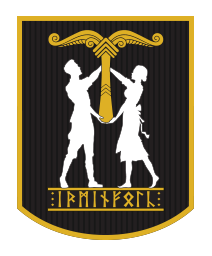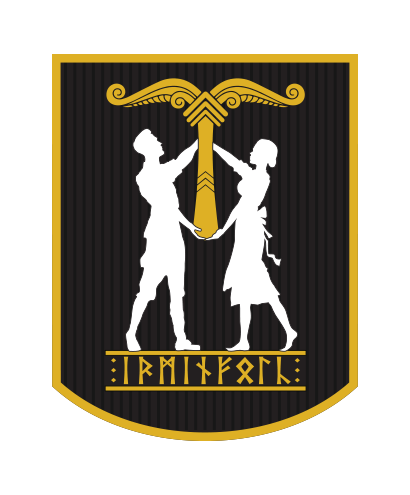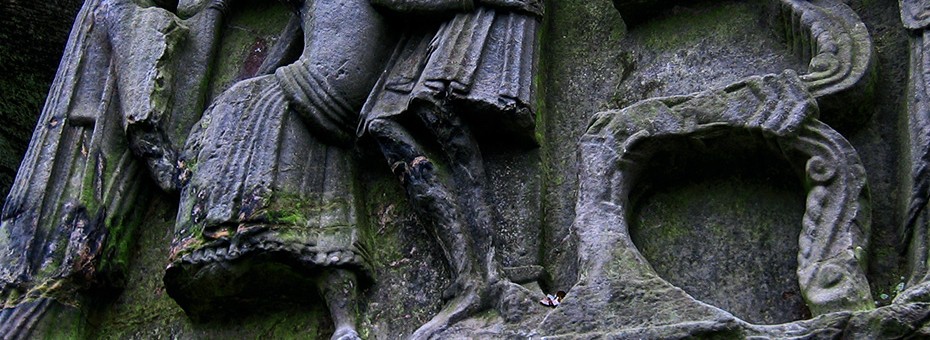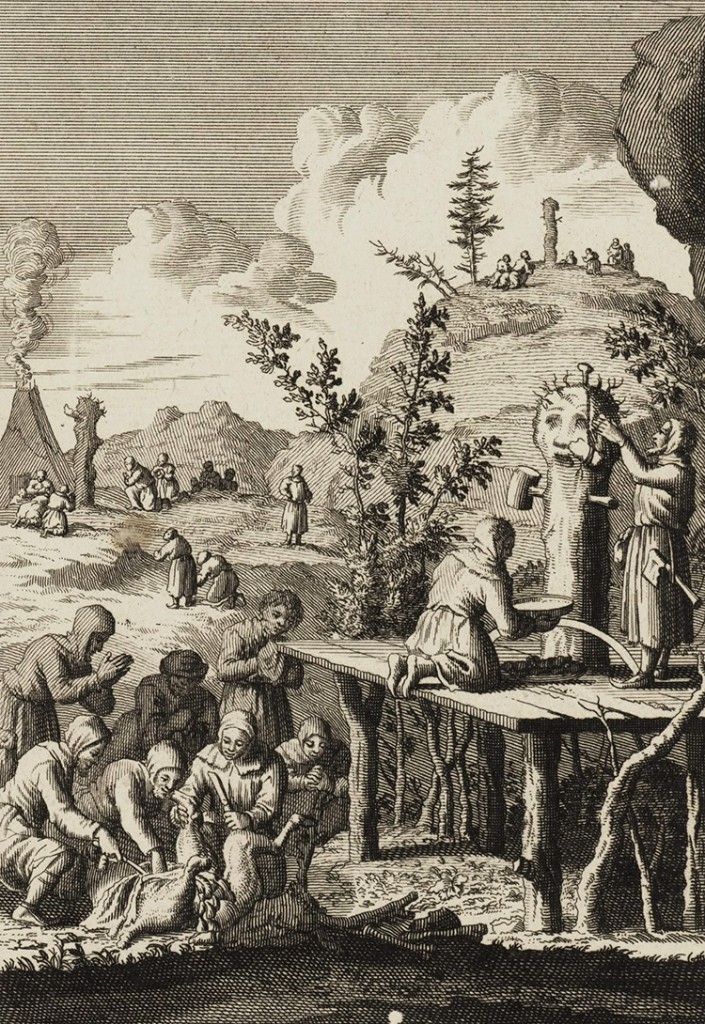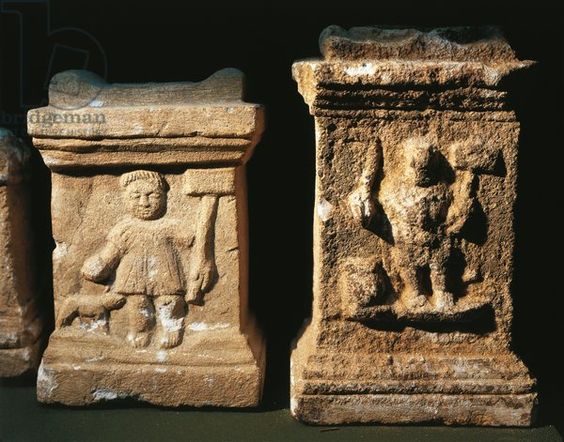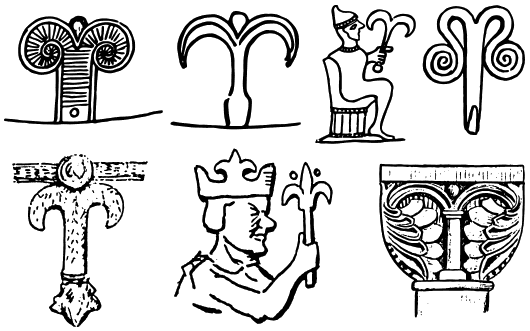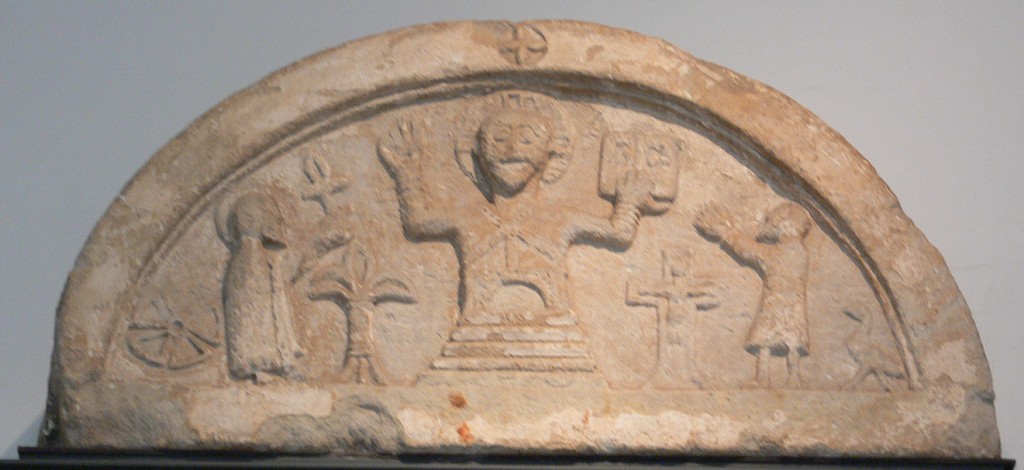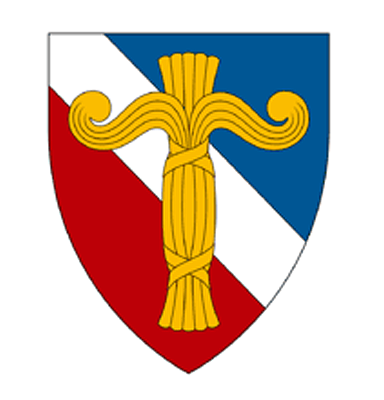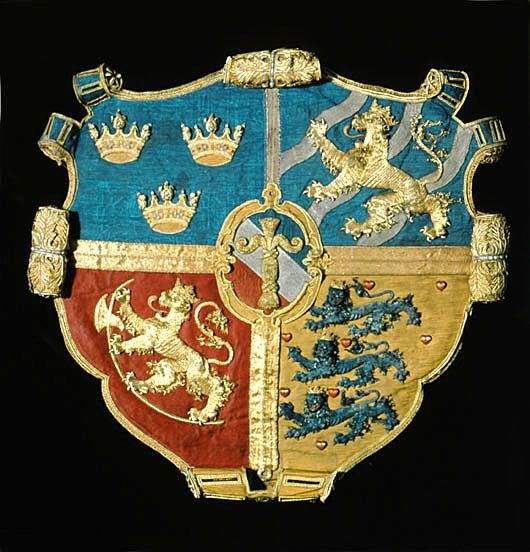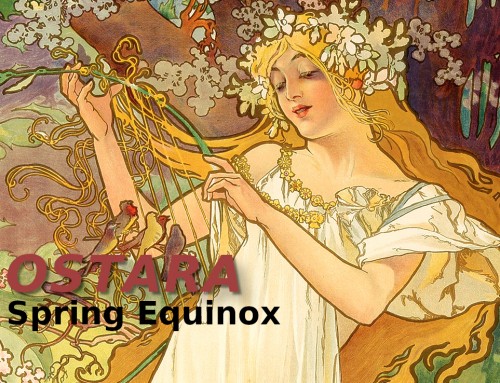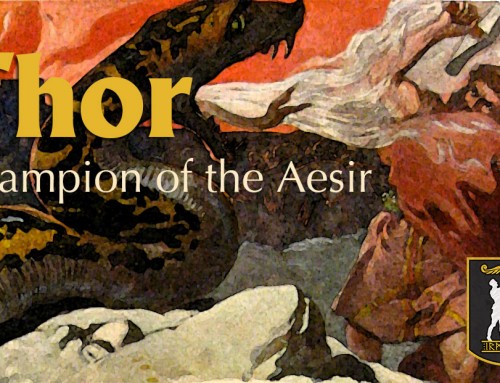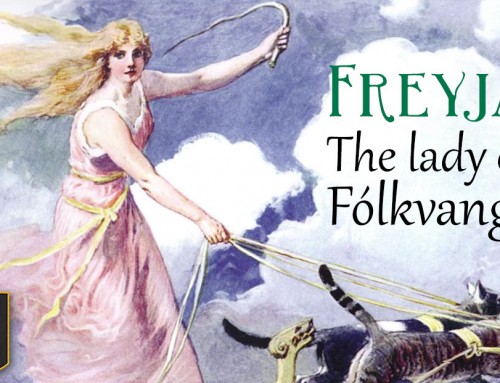In the rich plethora of ancient, pre-Christian Nordic symbolism and conceptions of reality, there’s undoubtedly often a core of sober awareness of the truth. Behind the vivid and oftentimes youthful perceptions exhibited in Northern myth, there’s an enlightened awareness – one that reverberates into some of the most recent and popular modern scientific discoveries and theories.
Such is the case with the Valknut and the concept of Molecular Borromean Rings; the concept of Wyrd/Urðr as it relates to String Theory and the Quantum Entanglement theory; as well as various aspects of destiny in Nordic tradition, and the modern idea of synchronicity. The World Tree (Yggdrasil, in Norse tradition), or the World Pillar (Irminsul, among the continental Germanic tribes) is of course subject to a number of interpretations, too: as an explanatory model of human psychology/physiology (also found in the Vedic philosophy of Chakras), and as a sort of rough draft of the structure of parallel dimension. It is even genuinely consistent with the modern notion of the shape of the whole of the universe itself – the Torus/Dougnut Universe theory.
This short study, which will not seek to explain nor prove any such (admittedly, sometimes far fetched) relations of the mythic World Pillar to scientific teachings, but will instead have a look at some more world-historical aspects of the Irminsul (“The Great/Mighty Pillar”): what it meant, what it looked like, and where it was located.
The mighty pillar
The World Pillar – the Axis Mundi – is present not only in the Germanic nor even exclusively European cultural sphere, but appears almost universally throughout the world in the spiritual heritage of many indigenous cultures. In Europe, however, the Romans along the borders of the Rhine had their Jupiter Columns, and we know of the Pillars of Hercules – a name by which the Roman senator and historian Tacitus referred to what we can realistically assume to be the Irminsul. Tacitus also wrote of a trinity of Germanic gods: Istwô (Odin), Irminaz (Thor) and Ingwaz (Freyr), as sons of the archaic Germanic high god Mannus, which is the equivalent of Manu, the Law Giver in Hindu tradition.
It is pretty fair to assume that there is a clear association with Irminaz (Thor) and the Irminsul, which explains why Tacitus so comfortably refers to the Irminsul as Pillars of Hercules (in Interpretatio Germanica, Hercules is comparable with Thor).
The Axis Mundi is, as the name suggests, the world axis: the connection/separator between the heaven and the earth. A symbol of stability and order, found again and again in the whole of both the macro- and microcosm; in philosphy and praxis. Thor (Irminaz) fills a somewhat similar purpose, as he spearheads the resistance of the Aesir against the chaotic powers of Jotunheim, and thus maintains stability and order in all the realms of the universe.
Nails in the head
In many depictions of the Irminsul, there’s a “pointy end” at the top of it (or a circle – a planet/star/the rising sun?). In some cases, even an obvious nail. This is among other things reminiscent of the Stella Polaris (the North Star), which is the symbolic “fixed point” of the world, around which Midgard revolves. Quite literally.
In Scandinavian tradition, we have an important phenomenon for the understanding of the symbolism of the Irminsul and this nail, namely the Öndvegissúlur (high-seat pillars). Those were the wooden posts of the high-seat, which the head of the family/aettir (i.e. the authority/maintainer of law and order) sat in between. The Landnámabók tells us that there were images of Thor carved into these wooden posts; and, indeed, the sagas also do tell us that these wooden high-seat posts had certain nails driven into them. These were known as Reginnaglar (“God Nails”/”Power Nails”). There’s an interesting parallel between these spikes, and the myth of Skáldskaparmál wherein Thor slays the giant Hrungnir. In the battle between the two combatants, the weapon of Hrungnir – a giant whetstone – gets shattered by a collision with Mjolnir, the hammer of Thor, and a fragment of the whetstone ends up inside Thor’s head and remains there.
H.R. Ellis Davidson writes about a much later reoccurrence of nails being driven into the head of wooden idols, dedicated to the Thunder God of the Lapps (a.k.a. the Sami, which is essentially a non-Nordic nomadic tribe of reindeer herders in Scandinavia), called Termes or even Toru. In Gods and Myths of Northern Europe, she writes the following:
A possible clue to the significance of such nails is found in seventeenth-century accounts of heathen religion among the Lapps. They are said to have kept an image of the thunder god in the form of a rude block of wood, with a man’s head carved at the top, and two sticks for arms, one holding a mallet. Schefferus (Acta Lapponia, 1674) remarks:
“Into his head they drive a nail of iron or steel, and a small piece of flint to strike fire with, if he hath a mind to it.”
Concerning the cult of the Thunder God among the Lapps, it’s worth mentioning that ceremonies such as these – appointed to Toru or Åskian (Åska is Swedish for thunder) – were still going on in northern Swedish Pite Lappmark in Norrbotten as late as 1692, resulting in a 60-year-old Lapp named Nils Larsson (who denied nothing, and refused to denounce his god) standing accused in a trolldomsmål (witch trial) in the court of Arjeplog; he was sentenced to life in prison by the chaplain of Silbojokk, Peter Nordeaus.
In addition to a number of contemporary eyewitnesses, the sentence was fully backed with physical evidence of blood stained wooden idols, “Torviggar” (“Thor bolts”), a hof (sacrificial building), remains of sacrificed animals and more. Even in 1725, there are records of people being accused and brought to court of law for similar accusations – worship of the Thunder God. As late as the 1920s, Swedish ethnologists documented stories from elderly people in these areas regarding similar religious customs (by that period in history, no longer considered illegal) among the Lapps. Essentially, there has been an unbroken continuity of the cult of Thor into the modern age in these areas.
Widening our focus briefly, the hammer wielding Celtic thunder god(s) Sucellus/Taranis, who share most of the traits of Thor, also have symbols of a pillar associated with them. The pillar or Sucellus has a striking resemblance to the Irminsul as we presume it looked, based on the relief at Externsteine and other evidence. At the top of his pillar, there’s also a nail. Not much is known of any cult or ritual praxis surrounding these pillars of Sucellus, but as we have seen – mighty pillars (aside from wheels, chariots, clubs/hammers and lightning bolts etc.) seems to be a common trait in the cult surrounding the (Indo-)European gods and heroic demigods of thunder and agriculture, such as Thor/Donar, Sucellus/Taranis, Hercules/Heracles, Jupiter, Indra and others.
What does the Irminsul look like?
This leads us to the question of what the Irminsul actually looks like, if we disregard the specifically Scandinavian wooden idols with clear human traits. In certain academic circles, it’s popular to use a rather sour tone and claim that there is no way of saying what it actually looked like historically – “if it ever existed”, some might even add. In many later depictions of the Irminsul (during the 1800′s and early 1900′s), we see images that look like rather grotesque Indian totem poles, or even statues with the complete features of a man – somewhat reminiscent of the Scandinavian wooden idols mentioned previously.
Researchers such as William Teudt, Hans Wilhelm Hammerbacher, Ferdinand Seitz, and numerous others, have done so much excellent work in solving the riddle of the Irminsul’s historical appearance that only the most stubborn of hardheaded cynics hold on to their skepticism. One of the most valuable and interesting representations thought to be depicting an Irminsul, is to be found at Externsteine near Detmold/Horn-Bad Meinberg in Germany.
Externsteine is an old Germanic heathen sanctuary, which was later Christianized (sometime in the interim, there might have even been a cult of Mithras active there for a period of time). On a stone relief at the site, one can see the descent of Jesus from the cross. At the right hand side of the cross, Nicodemus stands on a bent “(palm)tree”, as he helps lower Jesus from the Crucifix. Today, a large number of researchers and historians agree that this so called tree might very well be the Irminsul. In Christian imagery of that time, standing on top of one’s opponent is a very common and clear symbol of domination and triumph. If this really is the Irminsul, it appears at least someone didn’t agree with the idea of wholesale humiliation and foreign spiritual triumph, and thus Nidocemus’ legs have been hacked away.
It is noteworthy that the lower part of this stone relief shows signs of considerably more wear than the upper scene of the crucifixion (and that the two parts are made in notably different aesthetic styles), and that the upper part of the relief itself appears to be made on a deeper and clean cut surface. Some speculate this is due to the fact that there was originally another motif at the place of this relief; perhaps – and if this is case, it is very likely – one in which the Irminsul is the central element.
This archaic pillar symbol is widespread throughout Europe, and is often present at churches and other sites considered holy. Pillars and arches constructed in the early Middle Age often bear resemblance to the Irminsul, or are beyond doubt meant to represent one. Even the French national emblem itself, the Fleur-de-lis, is literally sprung from the same roots as the Irminsul. This is something which can be easily seen when chronologically comparing the visual development of the Fleur-de-lis in early Middle Age heraldry, and symbolism where it appears in general.
Another instance of the Irminsul appearing in heraldry is in the one of the Swedish royal House of Vasa. There are a number of different visual appearances of the coat of arms of the House of Vasa, some of which bear a very clear and undeniable resemblance to the Irminsul. There’s to my knowledge no clear idea of exactly what the Vase in House of Vasa is meant to represent. According to some, it’s a fishing tool; according to others, it’s a tool of siege craft made out of straw (for what purpose, I don’t know). What is obvious, however, is that it does look a lot like the suggested Irminsul.
Where did the Irminsul stand?
According to recorded history, Charlemagne (“Karl the Great”) occupied the Saxon stronghold Eresburg in the vicinity of Paderborn in present day Germany, and cut down the Irminsul in the year of 772 c.e. The Irminsul is said to have stood on what is now known as Priesterberg (“Priest’s Mountain”) overlooking the Diemel valley of the Teutoburg forest region.
Local legends of Bad Driburg, a village east of Paderborn, has it that the Irminsul (or maybe another Irminsul?) was erected at the hill Eggegebirge (an older name for Externsteine is, by the way, Eggestersteine – egge supposedly means edge/ridge), where the ruins of Iburg (which is a smaller fort construction, presumably from the late 8th century) currently stand. According to others, at the top of the highest cliff of Externsteine – known as the “Turmfels” (“Tower cliff”) or “Turm der Veleda” (“Tower of Veleda”; Veleda was a Germanic prophetess mentioned by Tacitus) – it’s suggested that another Irminsul (or the Irminsul) might have stood.
There are other traces as where to find the site – or even remains – of the Irminsul(s), like the one at the Hildesheim cathedral. Under the reign of Louis the Pious of the 9th century, remains of the Irminsul were reportedly unearthed in Obermarsberg in Westphalia. This column was then brought to the Hildesheim cathedral (located between Externsteine and Goslar), where it was erected inside the cathedral as a candelabrum (candle tree/candle holder) – but doesn’t look much like the Irminsul today, if there’s any truth to the story at all. It is also recorded that Charlemagne’s destruction of the Irminsul was celebrated in Hildesheim at the Saturday after Laetare Sunday, at least until as late as the 13th century.
It’s difficult to determine which of these Irminsuls ever actually existed, and it is even more difficult to speculate about which one of them was “the right one.” In any case, it’s highly unlikely that any of these examples were the only Irminsul columns of ancient Germania. On the contrary, the aforementioned representations of the Irminsul were perhaps the most notable of them. Perhaps they acted as the main sanctuaries of this cult. It is possible that there were lesser, local Irminsuls strewn across the ancient Germanic landscape, much like we encounter Jesus hanging on his cross in mountain regions of present day Germany, Austria and Switzerland. The propagandists of Charlemagne might also have made a conscious exaggeration of the importance of the specific Eresburg Irminsul to all of the Germanic tribes, in order to seem more triumphant once they defeated the Saxons of that particular region.
When we keep in mind that we are dealing with historical matters that are well over a thousand years old, and that it was additionally in the best interest of the ruling powers throughout history to obscure the truth concerning these matters, it is indeed difficult to be fully certain about almost anything. In all honesty, we can’t say for sure exactly what the Irminsul looked like, or where it was located. However, there are many clues: bits and pieces of evidence that fit into a bigger picture, and make out a rough draft, which must be interpreted as what is most reasonable and probable.
By the efforts of intrepid individuals, the future might not only let us fully reveal the historical truth about the Irminsul, but also once more let us understand its very essence, and thus finally allow us to realize the cosmic destiny that it represents.

